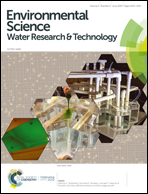Periodic symmetry defined bioreactors enhance algae growth
Abstract
This article explores a new, highly scalable bioreactor design for photosynthetic, lipid producing organisms. Microalgae are important to the recovery of resources from wastewater and microalgae derived oils have the potential to become an important source of transportation fuels, but current photobioreactor designs are not readily scalable. In contrast, this article evaluates the productivity of periodic designs that use repeated unit cells defined by fluid dynamically driven recirculation profiles so that scaleup may be achieved simply by increasing (massively) the number of unit cells. Photobioreactors with one, seven, and nineteen unit cells were constructed containing 13.2, 92.4, and 251 gal, respectively, to demonstrate scalability. Development of a kinetic growth model accounting for variations in photointensity versus depth predicts approximately linear (instead of exponential) growth as observed in the first week of productivity. This design decreases the required power per volume by over 50% compared to paddlewheel designs, and material costs per unit cell decrease with increasing reactor size, because flow symmetry defines the boundaries of the unit cells in the absence of internal material walls. These results provide a more efficient path to scale up to commercially relevant acreage, bringing algal biofuels closer to energy parity.



 Please wait while we load your content...
Please wait while we load your content...